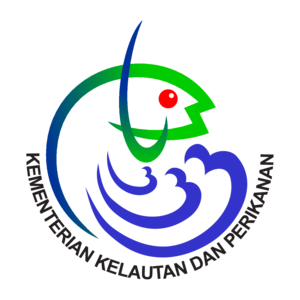BAKTERI ASOSIASI PADA KARANG SCLERACTINIA KAITANNYA DENGAN FENOMENA LA-NINA DI PULAU BUNAKEN
Abstract
Penelitian tentang karang keras (Scleractinian coral) yang terkontaminasi bakteri relatif masih kurang dilakukan khususnya di perairan Indonesia. Untuk itu dilakukan kegiatan penelitian di Taman Nasional Bunaken pada dua periode yakni Mei 2010 (musim peralihan I) dan Agustus 2011 (Monsoon II). Penelitian ini difokuskan pada kontaminasi bakteri gram positif (+) dan gram negatif (-). Metode yang dilakukan untuk pengambilan sampel di lapangan adalah time swim dimana menyelam pada kedalaman 5-10 meter selama kurang lebih 30 menit dan mengambil sampel mucus karang secara acak/random dengan menggunakan siring atau mengambil sampel secara langsung pada karang (fraksi cabang) pada lokasi yang sama. Sampel dianalisis dengan proses isolasi bakteri di laboratorium. Hasil penelitian menunjukkan bahwa pada Mei 2010 bakteri gram positif lebih mendominasi dari gram negatif, sebaliknya Agustus 2011 bakteri gram negatif yang lebih dominan dari gram positif. Indikasi faktor penyebab terjadinya bakteri gram positif yang lebih dominan khususnya di tahun 2010 ialah fenomena La-Nina yang terjadi selama periode tersebut. Perubahan suhu rata-rata yang terjadi pada kedua musim tersebut menjadi salah satu faktor yang merangsang pertumbuhan kedua kelompok bakteri ini. Perlu dilakukan penelitian lebih lanjut khususnya dalam menentukan jenis bakterinya dan pengambilan sampel pada setiap musim.
Keywords
Full Text:
PDFReferences
Ampou, E.E., Triyulianti, I., Widagti, N., Hamzah, F. & Manessa, M.D.M.. (2011). Studi operasional oseaonografi untuk konservasi ekosistem terumbu karang. Laporan Penelitian. Tim Perubahan Iklim, Balai Penelitian dan Observasi Laut.
Anthony, K.R.N. & Kerswell, A.P. (2007). Coral mortality following extreme low tides and high solar radiation. Marine Ecology Progress Series, 151 (5): 1623–1631. doi:10.1007/s00227-006-0573-0.
Aronson, RB., & Precht WF. (2001). White-band disease and the changing face of Caribbean coral reefs. Hydrobiologia, 460: 25–38.
Banin, E., Ben-Haim, Y., Israely, T., Loya, Y., & Rosenberg, E. (2000). Effect of the environment on the bacterial bleaching of corals. Water, Air and Soil Pollution, (123): 337-352.
Bourne, D.G., Garren, M., Work, T.M., Rosenberg, E., Smith, G.W. & Harvell, C.D. (2010). Microbial disease and the coral holobiont. Trends in Microbiology, (12) : 554 – 562.
Bruckner, A.W., & Hill, R.L. (2009). Ten years of change to coral communities off Mona and Desecheo Islands, Puerto Rico, from disease and bleaching. Diseases of Aquatic Organisms, 87: 19–31.
Bruno, J.F., & Selig, E.R. (2007). Regional decline of coral cover in the Indo-Pacific: Timing, extent, and subregional comparisons. PLoS ONE 2: e711.
Carpenter, S., Walker, B., Anderies, J.M., & Abel, N. (2001). From metaphor to measurement: Resilience of what to what? Ecosystems, 4, 765-781.
De’ath, G., Lough J. M. & Fabricius, K.E. (2009). Declining coral calcification on the Great Barrier Reef. Science, 323: 116–119.
Efrony, R., Loya, L., Bacharach, E. & Rosenberg. (2007). Phage therapy of coral disease. Coral Reefs, (26) : 7 – 13.
Frias-Lopez, J., Zerkle, A.L., Bonheyo, G.T. & Fouke, B.W. (2002). Par-titioning of bacterial communities between seawater and healthy, black band diseased, and dead coral surfaces. Appl Environ Microbiol, 68: 2214–2228.
Grimsditch, Gabriel D., & Salm, Rodney V. (2006). Coral reef resilience and resistance to bleaching. IUCN, Gland, Switzerland. 52pp.
Harvell, C.D., Jordan-Dahlgren, E., Merkel, S., Rosenberg, E., Raymundo, L., Smith, G., Weil, E. & Willis, B. (2007). Coral disease, environmental drivers, and the balance between coral and microbial associates. Oceanograpy, 20: 172–195.
Hoegh-Guldberg, O, Mumby, P.J., Hooten, A.J., Steneck, R.S., & Greenfield, P. (2007). Coral reefs under rapid climate change and ocean acidification. Science, 318: 1737–1742.
Johnson, J.E., & Marshall, P.A. (2007). Climate change and the Great Barrier Reef: A vulnerability assessment. Townsville, Qld.: Great Barrier Reef Marine Park Authority. ISBN 978-1-876945-61-9.
Jokiel, P.L., & Coles, L. (1990). Response of Hawaiian and other Indo Pacific reef corals to elevated temperature. Coral Reefs, 8: 155-162.
Kushmaro, A., Loya, Y., Fine, M., & Rosenberg, E. (1996). Bacterial infection and coral bleaching. Nature, 380:396.
Kushmaro, A., Rosenberg, E., Fine, M., & Loya, Y. (1997). Bleaching of the coral Oculina patagonica by vibrio AK-1. Marine Ecology Progress Series, 147: 159–165. doi:10.3354/meps147159.
Legendre, L., & Legendre, P. (1998). Numerical ecology. Elsevier Scientific Publishing Company. 853 p.
Muller, E.M., Raymundo, L.J., Willis, B.L., Haapkyla, J., Yusuf, S., Wilson, J.R., & Harvell, D.C. (2012). Coral health and disease in The Spermonde Archipelago and Wakatobi, Sulawesi. Journal of Indonesia Coral Reefs, 1(3), 149-159.
Odum, E.P. 1989. Ecology and our endangered life-support systems. Sinauer Associates Inc: Sunderland (USA)
Pelczar, M.J., & Chan, E.C.S. (2005). Dasar-dasar Mikrobiologi 2. Jakarta: UI-Press.
Raina, J.E., Tapiolas, D., Willis, B.L., & Bournei, D.G. (2009). Coral associated bacteria and their role in the biogeochemical cycling of sulfur. Applied and Environmental Microbiology, (75): 3492 – 3501.
Rogers, S.R. (1990). Responses of coral reefs and reef organisms to sedimentation. Marine Ecology Progress Series, 62: 185–202. doi:10.3354/meps062185.
Rohwer, F., Seguntan, V., Azan, F., & Knoulton, N. (2002). Diversity and distribution of coral-assosiated bacteria. Marine Ecology Progress Series, 243: 1-10.
Santavy, D.L. (1995). The diversity of microorganisms associated with marine invertebrates and their roles in the mainte-nance of ecosystems. In: Allsopp D, Colwell RR, Hawks-worth DL (Eds). Microbial diversity and ecosystem func-tion. CAB International, Wallingford, p 211–229.
Santavy, D.L., & Peters, E.C. (1997). Microbial pests: coral disease in the Western Atlantic. Proc 8th Int Coral Reef Symp, 1: 607–612.
Saxby, T., Dennison, W.C., & Hoegh-Guldberg, O. (2003). Photosynthetic responses of the coral Montipora digitata to cold temperature stress". Marine Ecology Progress Series, 248: 85. doi:10.3354/meps248085.
Turak, E., & De Vantier, L. (2003). Reef building corals of Bunaken National Park, north Sulawesi, Indonesia: Rapid Ecological Assesement of biodiversity and status. Final Report to the International Ocean Institute Regional Centre for Australian and the western pacific.
Weil, E., Smith, G., & Gil-Agudelo, D.L. (2006). Status and progress in coral reef disease research. Diseases of Aquatic Organism, 69(1):1-7.
http://whc.unesco.org/en/tentativelists/2002/. State Minister for The Environment. (2005). Bunaken National Park, diakses pada tanggal, 2 Februari 2012.
http://www.bmkg.go.id/BBMKG_Wilayah_3/Lain_Lain/Artikel/HUJAN_DI_MUSIM_KEMARAU_DAMPAK_LA_NINA.bmkg. BMKG. (2010). Diakses pada tanggal 9 Maret 2012.
DOI: http://dx.doi.org/10.15578/jkn.v10i2.6157
Copyright (c) 2017 Jurnal Kelautan Nasional
Copyright of Jurnal Kelautan Nasional (p-ISSN 1907-767X, e-ISSN 2615-4579)
Pusat Riset Kelautan
Badan Riset dan Sumberdaya Manusia Kelautan dan Perikanan
Kementerian Kelautan dan Perikanan
Index by
 Jurnal Kelautan Nasional
Jurnal Kelautan Nasional
















